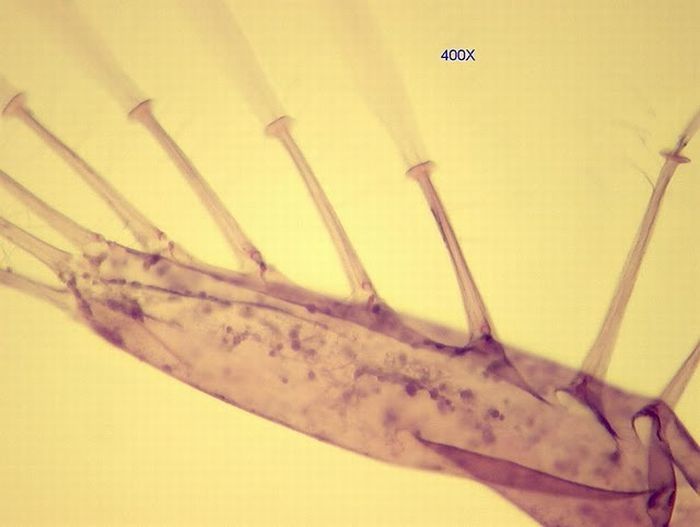|
|
Copepods
|
The second pair of antennae are the main source of propulsion, beating like oars to pull the animal through the water.
Many of the smaller copepods feed directly on phytoplankton, catching cells singly. Some of the larger species are predators of their smaller relatives. Many benthic copepods eat organic detritus or the bacteria that grow in it, and their mouth parts are adapted for scraping and biting. Herbivorous copepods, particularly those in rich cold seas, store up energy from their food as oil droplets while they feed in the spring and summer plankton blooms. These droplets may take up over half of the volume of the body in polar species.
This scene was scanned with the ecoSCOPE, an underwater high speed microscope. Very little is known about the details of these kinds of predator/prey interactions, in spite of their importance for global processes, because copepods are difficult to keep in the laboratory and lose most of their escape capacity, and herring are very fast, alert and evasive organisms and flee from normal camera systems or scuba divers.
|
|









